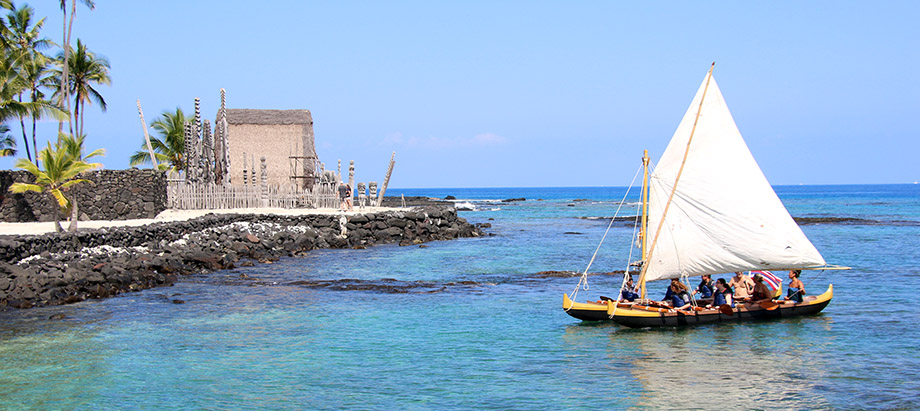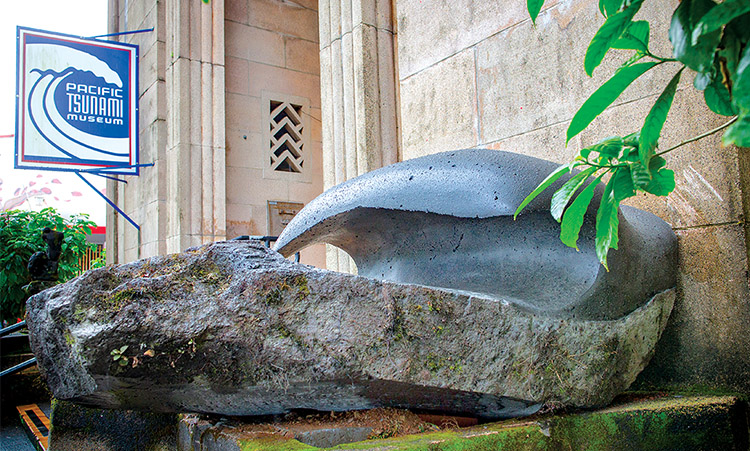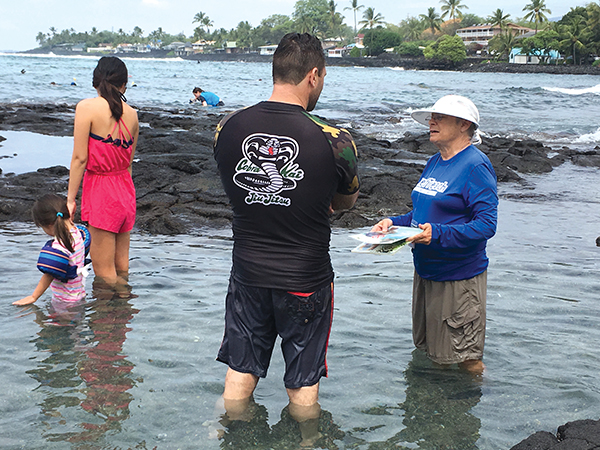
Mālama Moana: Take Care of the Ocean that Takes Care of You
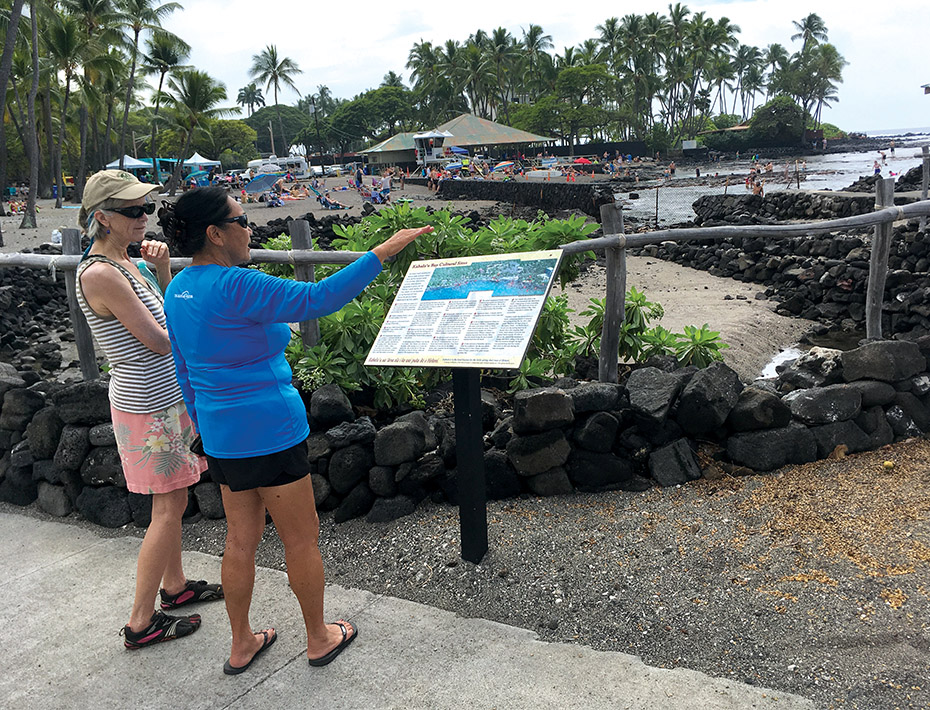
By Rachel Laderman
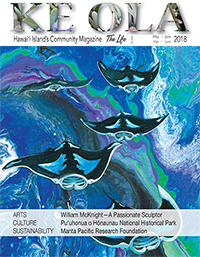
Sometimes through ignorance, we smother our beaches, reefs, and wildlife with so much affection and attention that they are left gasping to recover.
At Kahalu‘u Bay in Kailua-Kona, the community saw this happening. Beautiful Kahalu‘u Bay was deteriorating due to unaware actions of thousands of park visitors each month. “Tourists were sitting on the turtles to take a picture. They were turning them over,” says Cindi Punihaole, director of the Kahalu‘u Bay Education Center. “The community, businesses, and the UH Sea Grant Kona agent went to The Kohala Center and said, ‘We need help educating people.’” Now a partnership of these entities, plus the County of Hawai‘i Parks Department, provide a model of welcoming, effective on-site education.
The Kahalu‘u Bay Education Center operates out of a turquoise mobile van wrapped in a vibrant mural of sea life displaying reef etiquette tips. Staff and volunteers set up tents and tables of information daily from 9:30am to 4pm, weather permitting. The center is funded primarily by grants and donations from business partners and individuals plus a small income from renting snorkeling gear.
Cindi grew up in a nearby ahupua‘a (district), and fished at Kahalu‘u with her father. She has seen first-hand how the reef has been devastated. “Growing up in Kona in the 50s, it was truly country, no electric, no running water, no inside utilities. You were gatherers. It was difficult, but the most beautiful time.”
When visitors to Kahalu‘u Bay are drawn over to the education van to rent gear and get snorkeling tips, the educators take the opportunity to do a ten second talk on how to enjoy the bay without harming its fragile corals and marine life. Here are some of their guidelines.
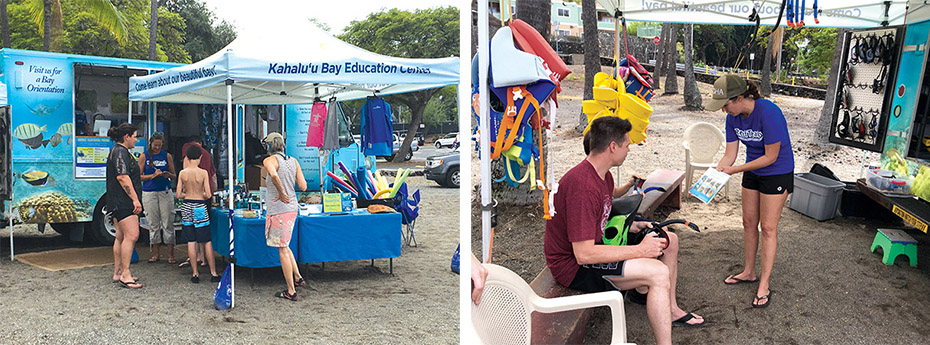
Do Not Stand on or Touch Coral
Coral is alive—those rock-like mounds house tiny polyps living symbiotically with algae. They do not appreciate being stood on by flippers and feet! Please do not drag diving gear and boats over coral. Swim gently—kicking up sand and sediment blocks sunlight needed by coral.
Pick up your ‘Ōpala (rubbish)
Clean up your surrounding area. Anything left on the beach ends up in the ocean, so bring a trash bag with you, look around before you leave, and spend five minutes picking up cigarette butts, plastic lids, drinking straws, food wrappers, plastic bags, and plastic lighters.
Leave Coral and Shells Where They Are
Crabs use shells as homes, and coral is the source for the future beach. State law prohibits intentional taking of, breaking or damaging coral or rock to which marine life is visibly attached (HRS-188-68).
Wear a Rash Guard and Use Mineral-Based Sunscreen
Common chemicals in most sunscreens are harmful to coral and other marine life. Look for zinc or titanium oxide-based sunscreens, instead. Minimize skin surface by wearing long-sleeved swim shirts. Use this list to find reef-safe sunscreen locally: www.koha.la/reef-friendly.
Leave Wildlife Alone
Never touch, handle, feed, or chase marine wildlife. Fish and marine invertebrates have a slimy coating that protects them from infection, and handling rubs this off. Honu (green sea turtles) and monk seals rest and sleep on the shore. While you may think they are injured or abandoned, there is usually nothing wrong with them. Stay at least 10 feet away from honu. Disturbing honu and monk seals violates state and federal laws.
Fish—and Shop for Fish—Responsibly
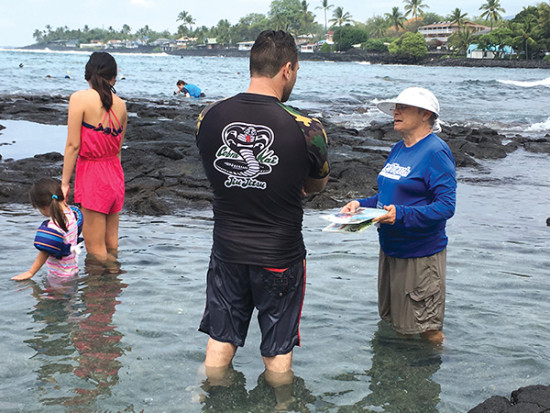
The fishing and foraging code of the Hawaiians is “Don’t take what you want; take only what you need.” Careful Hawaiian harvesters observe the cycles of sea creatures so they are left alone during reproductive times. Building on this knowledge and adding western science, The Kohala Center has produced a spawning guide for the leeward coast: see kohalacenter.org/spawning-guide/get.
Every visit to the beach can be a chance to mālama moana, to take care of the ocean. “Think three to four generations from now,” says Cindi. “Take care of the land because it takes care of you. Like your sweetheart: you take care of him, he takes care of you.” ❖
Reference and photo credit: Rachel Laderman, Lynker Technologies Marine Science Division/NOAA Affiliate, Hawai‘i Island
For more information on historic sites at Kahalu‘u: kohalacenter.org/kbec/culture-and-history
For beach cleanup: 808cleanups.org/calendar/

